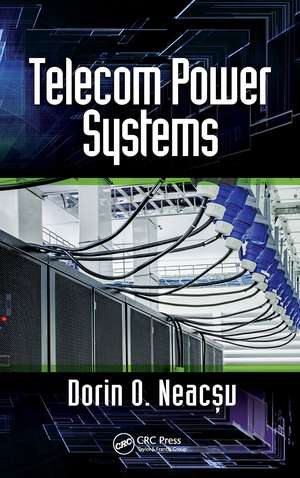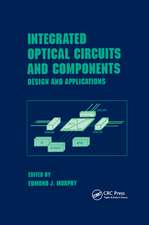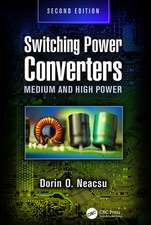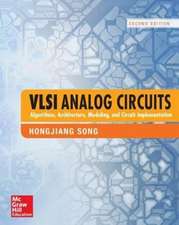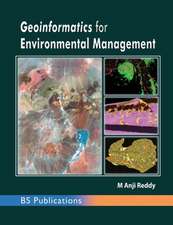Telecom Power Systems
Autor Dorin O. Neacșuen Limba Engleză Paperback – 30 sep 2020
| Toate formatele și edițiile | Preț | Express |
|---|---|---|
| Paperback (1) | 475.92 lei 6-8 săpt. | |
| CRC Press – 30 sep 2020 | 475.92 lei 6-8 săpt. | |
| Hardback (1) | 1008.17 lei 6-8 săpt. | |
| CRC Press – 8 dec 2017 | 1008.17 lei 6-8 săpt. |
Preț: 475.92 lei
Nou
Puncte Express: 714
Preț estimativ în valută:
91.08€ • 94.97$ • 75.69£
91.08€ • 94.97$ • 75.69£
Carte tipărită la comandă
Livrare economică 21 martie-04 aprilie
Preluare comenzi: 021 569.72.76
Specificații
ISBN-13: 9780367656416
ISBN-10: 0367656418
Pagini: 436
Dimensiuni: 156 x 234 x 23 mm
Greutate: 0.61 kg
Ediția:1
Editura: CRC Press
Colecția CRC Press
Locul publicării:Boca Raton, United States
ISBN-10: 0367656418
Pagini: 436
Dimensiuni: 156 x 234 x 23 mm
Greutate: 0.61 kg
Ediția:1
Editura: CRC Press
Colecția CRC Press
Locul publicării:Boca Raton, United States
Public țintă
Professional Practice & DevelopmentCuprins
1. Power System Architecture for Telecommunications Applications 2. Power Semiconductor Devices 3. Buck and Boost Converters 4. Point-of-Load Converters and Their Feedback Control Systems 5. State-Space Control of DC/DC Converters 6. Isolated DC/DC Converters: Flyback, Forward and Push-Pull 7. Converters with Reduced Power Loss 8. Power Management of Embedded Systems 9. Diode Rectifiers 10. Power Factor Correction 11. Single-Phase Inverters 12. Three-Phase Inverters 13. Converters with AC Reference 14. Uninterruptible Power Supplies
Notă biografică
Professor Dorin O. Neacșu received the M.Sc. and Ph.D. degrees in electronics from the Technical University of Iasi, Iasi, Romania, in 1988 and 1994, respectively, and the M.Sc. degree in engineering management from the Gordon Institute for Leadership, Tufts University, Medford, MA, USA in 2005. He was involved with TAGCM-SUT, Iasi, from 1988 to 1990, and with the faculty at Department of Electronics, Technical University of Iasi, between 1990 and 1999. During this time, he held visiting positions at Université du Quebec a Trois Rivières, Canada, and General Motors/Delphi, Indianapolis, USA. Following 1999, he was involved with the US industry as an Electrical Engineer, Consultant, Product Manager, and Project Manager, and with U.S. academic activities at the University of New Orleans, Massachusetts Institute of Technology, and United Technologies Research Center.
Since 2012, he is an Associate Professor with Technical University of Iasi, Romania and a repeat Visiting Associate Professor with Northeastern University, Boston, MA, USA. He has maintained a continuous stream of R&D publications since 1992 within various professional organizations around the world, has organized eight professional education seminars (tutorials) at IEEE conferences, and holds three US patents. He has published a book entitled "Switching Power Converters – Medium and High Power", (Boca Raton, FL, USA: CRC Press/Taylor and Francis, 2006) with a second edition from December 2013. Other ISBN books or college textbooks have been published in USA, Canada, and Romania. Dr. Dorin O. Neacșu received the 2015 "Constantin Budeanu" Award of the Romanian Academy of Sciences, the highest Romanian research recognition in electrical engineering. He is an Associate Editor of the IEEE TRANSACTIONS ON POWER ELECTRONICS and IEEE IES MAGAZINE, a Reviewer for the IEEE Transactions and Conferences, and a Member of various IEEE committees.
Since 2012, he is an Associate Professor with Technical University of Iasi, Romania and a repeat Visiting Associate Professor with Northeastern University, Boston, MA, USA. He has maintained a continuous stream of R&D publications since 1992 within various professional organizations around the world, has organized eight professional education seminars (tutorials) at IEEE conferences, and holds three US patents. He has published a book entitled "Switching Power Converters – Medium and High Power", (Boca Raton, FL, USA: CRC Press/Taylor and Francis, 2006) with a second edition from December 2013. Other ISBN books or college textbooks have been published in USA, Canada, and Romania. Dr. Dorin O. Neacșu received the 2015 "Constantin Budeanu" Award of the Romanian Academy of Sciences, the highest Romanian research recognition in electrical engineering. He is an Associate Editor of the IEEE TRANSACTIONS ON POWER ELECTRONICS and IEEE IES MAGAZINE, a Reviewer for the IEEE Transactions and Conferences, and a Member of various IEEE committees.
Descriere
This book addresses topics specific to the application of power electronics to telecom systems. It follows the power flow from national grid down to the last low-voltage high current requirement of a processor. Auxiliary equipment requirements, such as uninterruptible power supplies, storage energy systems, or charging systems, are explained.
